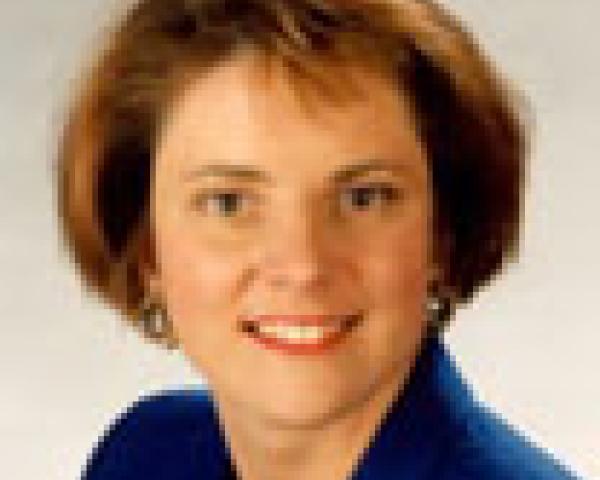5 Predictions for Agents in 2018
Competition, cost-effective technology and the need for growth create the perfect storm to finally transform agencies.

Competition, cost-effective technology and the need for growth create the perfect storm to finally transform agencies.

Get Involved
Our authors are what set Insurance Thought Leadership apart.
|
Partner with us
We’d love to talk to you about how we can improve your marketing ROI.
|

Jason Walker is managing partner of Smart Harbor, focused on two goals: helping independent insurance agents realize growth using digital technologies and enabling carriers to develop deeper partnerships and greater insights into the performance of their agent distribution channels.
Many employers assume an executive order insulates them against the employer mandate and other penalties; the IRS disagrees.

Get Involved
Our authors are what set Insurance Thought Leadership apart.
|
Partner with us
We’d love to talk to you about how we can improve your marketing ROI.
|

Cynthia Marcotte Stamer is board-certified in labor and employment law by the Texas Board of Legal Specialization, recognized as a top healthcare, labor and employment and ERISA/employee benefits lawyer for her decades of experience.

The annual EY Insurance Executive Forum in New York City last week crystallized some thoughts about the complexity of the innovation journey that insurance and risk management professionals face. So, as we head into the holiday season, while kidding ourselves about watching our eating, here is some calorie-free food for thought:
I often say that I've been watching the same movie on digital transformation for more than three decades, since I started covering IBM for the Wall Street Journal in 1986 and saw it implode, followed by disruption to the whole computer industry, followed by Internet-driven upheaval for retail, journalism, music, you-name-it. But I now think that the path for insurance and risk management will be more complicated and not just because of the complex regulatory environment. One would be remiss to overlook a fundamental reality: The convergence of technological capabilities, business acumen, and risk management resulting in the reinvention of an industry has become highly refined and remarkably well capitalized.
There are really four plot lines happening simultaneously within insurance and risk management.
First, as usually happens, every part of the value chain is being reexamined. Distribution has been a particular focus for innovators, but underwriting, claims, operations and everything else are also up for grabs. Given that nearly 40 cents of every premium dollar go to expenses, including loss adjustment expenses, there is an awful lot of room for innovation at a time when every industry faces extreme pressure for efficiency. But one person's efficiency is another person's revenue, so the push is never easy. Based on innovators tracked via the Innovators Edge platform, nearly 2,000 firms spanning 178 countries are "insurtechs" focused on transforming some aspect of insurance.
Second, the core of the product itself is changing, even more than typically happens when, say, music goes digital or when something like car rides or hotel rooms become based on sharing, coordinated through a digital overlay from an Uber or Airbnb. Increasingly, innovators are finding new ways to manage risk and prevent losses, rather than just compensating for losses after they've occurred. New business models have only peeked their heads out thus far, but some are surely coming and will drive great change while creating great angst. The number of early stage technology firms that focus on areas we refer to as reinventing the actual risks managed by insurers—areas such as artificial intelligence, genomics, robotics and more—tops 68,000 worldwide, per Innovator's Edge.
Third, the nature of work is changing. This is happening in every industry as robotic process automation (RPA) takes over routine tasks. For insurers, the complication is that the change is happening at the same time that they're wrestling with the sorts of fundamental issues that other industries have been adjusting to for 15 or 20 years now. In many ways, automation should be welcome in insurance both because it cuts expenses and because it could reduce the pain that is surely coming as so many in insurance professionals reach retirement age. But the change will require adjustment and create uncertainty.
Fourth, customer expectations are being reset in ways that are shocking insurers. They are finding themselves forced to conform to the sort of expectations that Apple's "there's an app for that" and Amazon's one-click have created in consumers. Again, every industry has had to confront these new expectations from customers who just "aren't going to take it" any more, but the change is happening unusually quickly in insurance, which intuitively makes sense given the sheer volume of customer experiences being reinvented every day. Having groceries and recipes delivered weekly was unknown globally 24 months ago and now boasts a market cap exceeding $2B. The industry pretty much remained in a cocoon until a couple of years ago but now must snap into line, not with the fledgling Amazon of 20 years ago, but with the overpowering Amazon of today. When customers begin asking Alexa for a quote on their car insurance, the train will have long since left the station on a stellar experience coming from within the industry.
Personal computer pioneer Alan Kay says that "everybody likes change – except for the change part." And change in insurance looks like it will follow an unusually convoluted series of plot lines. That said, the entire EY team is to be applauded for creating an EY Insurance Executive Forum experience that was rich with lessons learned and powerful advice.
As a supporting partner on the 2017 event, here are our top 6 important things we choose to highlight from this year's conference:
We would love to hear any reactions/additions/corrections on the above.
Cheers,
Paul Carroll and The ITL team
Get Involved
Our authors are what set Insurance Thought Leadership apart.
|
Partner with us
We’d love to talk to you about how we can improve your marketing ROI.
|

Paul Carroll is the editor-in-chief of Insurance Thought Leadership.
He is also co-author of A Brief History of a Perfect Future: Inventing the Future We Can Proudly Leave Our Kids by 2050 and Billion Dollar Lessons: What You Can Learn From the Most Inexcusable Business Failures of the Last 25 Years and the author of a best-seller on IBM, published in 1993.
Carroll spent 17 years at the Wall Street Journal as an editor and reporter; he was nominated twice for the Pulitzer Prize. He later was a finalist for a National Magazine Award.
Organizations risk reputation, loss of focus and reduced productivity levels and need to implement risk management practices immediately.

Get Involved
Our authors are what set Insurance Thought Leadership apart.
|
Partner with us
We’d love to talk to you about how we can improve your marketing ROI.
|

Jack Gibson has led the executive teams in determining the strategic directions of the companies along with high-level tactics since 1982 for IRMI and 2011 for WebCE, when it was acquired by IRMI. Until 2016, he also led the editorial and training and education teams at IRMI.
The promise of Digital Fusion is that the sky is the limit, and that digital thinking will provide growth through speed.

Get Involved
Our authors are what set Insurance Thought Leadership apart.
|
Partner with us
We’d love to talk to you about how we can improve your marketing ROI.
|

Denise Garth is senior vice president, strategic marketing, responsible for leading marketing, industry relations and innovation in support of Majesco's client-centric strategy.
A year after the Marai malware took some major websites down for a day, experts warn that Reaper could take down the entire internet.

Get Involved
Our authors are what set Insurance Thought Leadership apart.
|
Partner with us
We’d love to talk to you about how we can improve your marketing ROI.
|

John Farley is a vice president and cyber risk consulting practice leader for HUB International's risk services division. HUB International is a North American insurance brokerage that provides an array of property and casualty, life and health, employee benefits, reinsurance, investment and risk management products and services.

Judy Selby is a principal with Judy Selby Consulting LLC and a senior advisor with Hanover Stone Partners LLC. She provides strategic advice to companies and corporate boards concerning insurance, cyber risk mitigation and compliance, with a particular focus on cyber insurance.
Drones are being used in disaster management, geographic mapping, crop monitoring, supply chain monitoring, storm tracking...

 This gives insurers several good reasons to carry out these drone inspections. Here are some notable examples in the area:
This gives insurers several good reasons to carry out these drone inspections. Here are some notable examples in the area:
Get Involved
Our authors are what set Insurance Thought Leadership apart.
|
Partner with us
We’d love to talk to you about how we can improve your marketing ROI.
|

Werner Rapberger is a principal director in Accenture’s distribution and marketing practice for insurance. He is responsible for various clients and projects in insurance and also leads the global offering development for connected insurance and IOT insurance.
Customer experience efforts must include deep insight on a wide ecosystem of people and how they interact with your ultimate customer.

Get Involved
Our authors are what set Insurance Thought Leadership apart.
|
Partner with us
We’d love to talk to you about how we can improve your marketing ROI.
|

Maria Ferrante-Schepis is the managing principal of insurance and financial services innovation at Maddock Douglas.
If 2016 was when “some” insurers started innovating, 2017 will be remembered as the year when “all” insurers jumped on the bandwagon.

As we reach the end of 2017, the first full 12 months where insurtech has been recognized as a standalone investment segment, we wanted to reflect on what has been an incredible year.
From the start, we at Eos believed that insurtech would be driven globally, and that has certainly played out. This year, we’ve visited: Hong Kong, Amsterdam, New York, Las Vegas, Nigeria, Dubai, India, Singapore, Bermuda, Milan, St. Louis, Munich, Vienna, Paris, Zurich, Cologne, Chicago, San Francisco, Silicon Valley, Seattle and Toronto. We've expanded our geographic footprint to include the East and West coasts of the U.S. and India and have seen fantastic progress across our expanding portfolio. We've welcomed a number of new strategic partners, including Clickfox, ConVista and Dillon Kane Group, and launched our innovation center, EoSphere, with a focus on developing markets
At the start of the year, we published a series of articles looking at the key trends that we believed would influence insurtech and have incorporated these in our review of the year.
We hope you enjoy it! Comments, challenges and other perspectives, as always, would be greatly received.
2017: The year innovation became integral to the insurance sector
How are incumbents responding?
We are seeing a mixed response, but the direction of travel is hugely positive. A small number of top-tier players are embracing the opportunity and investing hundreds of millions, and many smaller incumbents with more modest budgets are opening up to innovation and driving an active agenda. The number sitting on the side lines, with a “wait and see” strategy is diminishing.
“If 2016 was the year when 'some' insurers started innovating, 2017 will be remembered as the year when 'all' insurers jumped on the bandwagon. And not a minute too soon! When I joined 3,800 insurance innovators in Las Vegas, we all realized that the industry is now moving forward at light speed, and the few remaining insurers who stay in the offline world risk falling behind.” Erik Abrahamson, CEO of Digital Fineprint
We are more convinced than ever that the insurance industry is at the start of an unprecedented period of change driven by technology that will result in a $1 trillion shift in value between those that embrace innovation and those that don’t.
Has anyone cracked the code yet? We don’t think so, but there are a small number of very impressive programs that will deliver huge benefits over the next two to three years to their organizations.
“We were pleased to see some of the hype surrounding insurtech die down in 2017. We’re now seeing a more considered reaction from (re)insurers. For example, there is less talk about the 'Uber moment' and more analysis of how technology can support execution of the corporate strategy. We have long argued that this is the right approach.” Chris Sandilands, partner at Oxbow Partners
Have insurers worked out how to work with startups? We think more work may be needed in this area….
See also: Insurtech: An Adventure or a Quest?The role of the tech giants
“Investors are scrambling for a piece of China’s largest online-only insurer… the hype could be explained by the 'stars' behind ZhongAn and its offering. Its major shareholders — Ping An Insurance (Group) Co., Alibaba Group Holding Ltd., Tencent Holdings Ltd.” – ChinaGoAbroad.com
“Tencent Establishes Insurance Platform WeSure Through WeChat and QQ” – YiCai Global
“Amazon is coming for the insurance industry — should we be worried?” – Insurance Business Magazine
“Aviva turns digital in Hong Kong with Tencent deal” – Financial Times
“Quarter of customers willing to trust Facebook for insurance” – Insurance Business Magazine
“Chinese Tech Giant Baidu Is Launching a $1 Billion Fund with China Life” – Fortune
We are already well past the point of wondering whether tech giants like Google, Amazon, Facebook, Apple (GAFA) and Baidu, Alibaba, Tencent (BAT) are going to enter insurance. They are already here.
Notice the amount of activity being driven by the Chinese tech giants. Baidu, Alibaba and Tencent are transforming the market, and don’t expect them to stop at China.
The tech giants bring money, customer relationships, huge amounts of data and ability to interact with people at moments of truth and have distribution power that incumbents can only dream about. Is insurance a distraction to their core businesses? Perhaps — but they realize the potential in the assets that they have built. Regulatory complexity may drive a partnership approach, but we expect to see increasing levels of involvement from these players.
Role of developing markets
It’s been exciting to play an active role in the development of insurtech in developing markets. These markets are going to play a pivotal role in driving innovation in insurance and in many instances, will move ahead of more mature markets as a less constraining legacy environment allows companies to leapfrog to the most innovation solutions.
Importantly, new technologies will encourage financial inclusion and reduce under-insurance by lowering the cost of insurance, allowing more affordable coverage, extending distribution to reach those most at need (particularly through mobiles, where penetration rates are high) and launching tailored product solutions.
Interesting examples include unemployment insurance in Nigeria, policies for migrant workers in the Middle East, micro credit and health insurance in Kenya, a blockchain platform for markets in Asia and a mobile health platform in India.
Protection to prevention
At the heart of much of the technology-driven change and potential is the shift of insurance from a purely protection-based product to one that can help predict, mitigate or prevent negative events. This is possible with the ever-increasing amount of internal and external data being created and captured, but, more crucially, sophisticated artificial intelligence and machine learning tools that drive actionable insights from the data. In fact, insurers already own a vast amount of historical unstructured data, and we are seeing more companies unlocking value from this data through collaboration and partnerships with technology companies. Insurers are now starting to see data as a valuable asset.
The ability to understand specific risk characteristics in real time and monitor how they change over time rather than rely on historic and proxy information is now a reality in many areas, and this allows a proactive rather than reactive approach.
During 2017, we’ve been involved in this area in two very different product lines, life and health and marine insurance.
The convergence of life and health insurance and application of artificial intelligence combined with health tech and genomics is creating an opportunity to transform the life and health insurance market. We hope to see survival rates improving, tailored insurance solutions, an inclusion-based approach and reduced costs for insurers.
[caption id="attachment_29390" align="alignnone" width="500"] Marine insurance is also experiencing a shift due to technology[/caption]
Marine insurance is also experiencing a shift due to technology[/caption]
In the marine space, the ability to use available information from a multitude of sources to enhance underwriting, risk selection and pricing and drive active claims management practices is reshaping one of the oldest insurance lines. Concirrus, a U.K.-based startup, launched a marine analytics solution platform to spearhead this opportunity.
The emergence of the full stack digital insurer
Perhaps reflecting the challenges of working with incumbents, several companies have decided to launch a full-stack digital insurer.
We believe that this model can be successful if executed in the right way but remain convinced that a partnership-driven approach will generate the most impact in the sector in the short to medium term.
“A surprise for us has been the emergence of full-stack digital insurers. When Lemonade launched in 2016, the big story was that it had its own balance sheet. In 2017, we’ve seen a number of other digital insurers launch — Coya, One, Element, Ottonova in Germany, Alan in France, for example. Given the structure of U.K. distribution, we’re both surprised and not surprised that no full-stack digital insurers have launched in the U.K. (Gryphon appears to have branded itself a startup insurer, but we’ve not had confirmation of its business model).” – Chris Sandilands, partner, Oxbow Partners
Long term, what will a "full stack" insurer look like? We are already seeing players within the value chain striving to stay relevant, and startups challenging existing business models. Will the influence of tech giants and corporates in adjacent sectors change the insurance sector as we know it today?
Role of MGAs and intermediaries
Insurtech is threatening the role of the traditional broker in the value chain. Customers are able to connect directly, and the technology supports the gathering, analysis and exchange of high-quality information. Standard covers are increasingly data-driven, and the large reinsurers are taking advantage by going direct.
We expected to see disintermediation for simple covers, and this has started to happen. In addition, blockchain initiatives have been announced by companies like Maersk, Prudential and Allianz that will enable direct interaction between customers and insurers.
However, insurtech is not just bad news for brokers. In fact, we believe significant opportunities are being created by the emergence of technology and the associated volatility in the market place.
New risks, new products and new markets are being created, and the brokers are ideally placed to capitalize given their skills and capabilities. Furthermore, the rising rate environment represents an opportunity for leading brokers to demonstrate the value they can bring for more complex risks.
MGAs have always been a key part of the value chain, and we are now seeing the emergence of digital MGAs.
Digital MGAs are carving out new customer segments, channels and products. Traditional MGAs are digitizing their business models, while several new startups are testing new grounds. Four elements are coming together to create a perfect storm:
Customer-driven approach
Three of the trends driving innovation that we highlighted at the start of the year centered on the customer and how technology will allow insurers to connect with customers at the “moment of truth”:
Over time, we expect the traditional approach to be replaced with a customer-centric view that will drive convergence of traditional product lines and a breakdown of silo organization structures. We’ve been working with Clickfox on bringing journey sciences to insurance, and significant benefits are being realized by those insurers supporting this fundamental change in approach.
Interesting ideas that were launched or gained traction this year include Kasko, which provides insurance at point of sale; Cytora, which enables analysis of internal and external data both structured and unstructured to support underwriting; and Neosurance, providing insurance coverage through push notifications at time of need.
See also: Core Systems and Insurtech (Part 3)Partnerships and alliances critical for success
As discussed above, we believe partnerships and alliances will be key to driving success. Relying purely on internal capabilities will not be enough.
“The fascinating element for me to witness is the genuine surprise by insurance companies that tech firms are interested in 'their' market. The positive element for me is the evolving discovery of pockets of value that can be addressed and the initial engagement that is received from insurers. It’s still also a surprise that insurers measure progress in years, not quarters, months or weeks.” – Andrew Yeoman, CEO of Concirrus
We highlighted three key drivers at the start of the year:
The move toward partnership built on the use of open platforms and APIs seen in fintech is now prevalent in insurance.
“We are getting, through our partnerships, access to the latest technology, a deeper understanding of the end customers and a closer engagement with them, and this enables us to continue to be able to better design insurance products to meet the evolving needs and expectations of the public.” Munich Re Digital Partners
Where next?
Key trends to look out for in 2018
“As we enter 2018, I think that we’ll see a compression of the value chain as the capital markets move ever closer to the risk itself and business models that syndicate the risk with the customer — active risk management is the new buzzword.” – Andrew Yeoman, CEO Concirrus
We’re excited to be at the heart of what will be an unprecedented period of change for the insurance industry.
A quick thank you to our partners and all those who have helped and supported us during 2017. We look forward to working and collaborating with you in 2018.
Get Involved
Our authors are what set Insurance Thought Leadership apart.
|
Partner with us
We’d love to talk to you about how we can improve your marketing ROI.
|

Sam Evans is founder and general partner of Eos Venture Partners. Evans founded Eos in 2016. Prior to that, he was head of KPMG’s Global Deal Advisory Business for Insurance. He has lived in Sydney, Hong Kong, Zurich and London, working with the world’s largest insurers and reinsurers.
China is right, and America doesn’t realize how much things have changed and how rapidly it is losing its competitive edge.

Get Involved
Our authors are what set Insurance Thought Leadership apart.
|
Partner with us
We’d love to talk to you about how we can improve your marketing ROI.
|

Vivek Wadhwa is a fellow at Arthur and Toni Rembe Rock Center for Corporate Governance, Stanford University; director of research at the Center for Entrepreneurship and Research Commercialization at the Pratt School of Engineering, Duke University; and distinguished fellow at Singularity University.